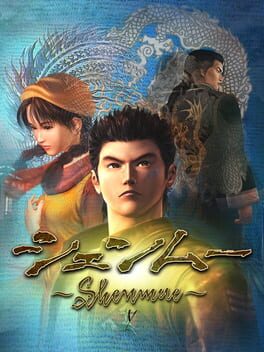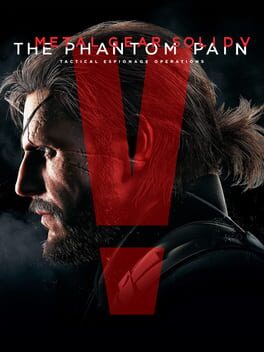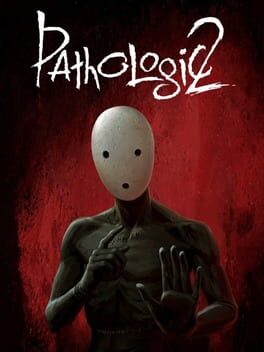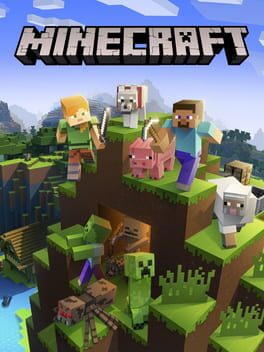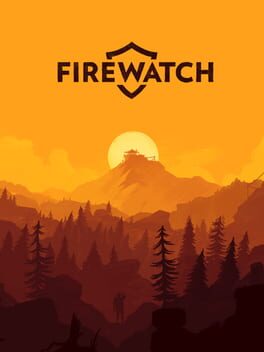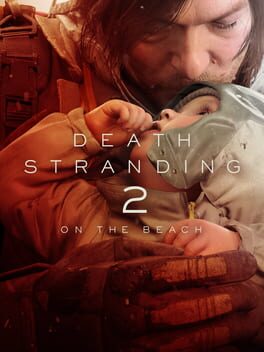caebl201
Bio
Working on Metal Gear Solid 4 review, will post soon
Working on Metal Gear Solid 4 review, will post soon
Badges

Adored
Gained 300+ total review likes

Trend Setter
Gained 50+ followers

2 Years of Service
Being part of the Backloggd community for 2 years

GOTY '22
Participated in the 2022 Game of the Year Event

Roadtrip
Voted for at least 3 features on the roadmap

Loved
Gained 100+ total review likes

Popular
Gained 15+ followers

Donor
Liked 50+ reviews / lists

Best Friends
Become mutual friends with at least 3 others

Noticed
Gained 3+ followers

Well Written
Gained 10+ likes on a single review

Gone Gold
Received 5+ likes on a review while featured on the front page

Liked
Gained 10+ total review likes
Favorite Games
042
Total Games Played
000
Played in 2024
190
Games Backloggd
Recently Played See More
Recently Reviewed See More
The biggest video game mystery of the past decade. It's the most groundbreaking, medium-redefining experience of our generation - and nobody can explain why. I'm convinced this is all a conspiracy orchestrated by YouTube video essayists. The promise (yet unfulfilled) of The Great Open World Video Game blinds us to the fact that we've seen all of this many times before.
Fundamentally, Breath of the Wild is a pastiche of the safest, most focus-tested game design principles of the preceding decade. You could call it the 'Tower' type game. Climb a tower to unlock a new area on your map, which will reveal the repeatable skinner box activities you can complete there. Puzzles, dungeons, enemy camps, the usual. These activities give you something like XP, increased health, or a new item, which account for progression. Once you're done, you climb another tower and repeat the process until you're ready to fight the final boss (or more likely, until you're bored and ready to rush to the game's end).
That's the gameplay loop. And like every single other one of these games ever made, the loop eventually becomes a dull grind. Breath of the Wild does nothing to solve this problem endemic to open world games. Some have praised the game's traversal, which, other than shield surfing (which is cool to be fair), is really just climbing walls, riding a horse, using a glider, or fast travelling; the same traversal methods in Assassin's Creed: Brotherhood, released seven years earlier (Shadow of the Colossus is also a clear influence). Really I would challenge anyone to explain how Breath of the Wild is a masterpiece while Assassin's Creed is a soulless corporate product. You're playing the same game. What's the difference besides some nice vibes and a cell-shaded art style? Grass? At least Assassin's Creed has that cyberpunk meets ancient aliens meets secret societies meets historical fiction bullshit made up by French people. That's creativity.
Proponents of the game may praise the Shiekah slate physics abilities as an innovation, and that feels true at first. But eventually your enemies become too powerful for hitting them with rocks or whatever to do a thing; you'll need to use some bullshit level-scaled RPG weapon. And even if the Shiekah slate remained effective in combat, you would still end up doing this. Why? Because this game has so much dull, repeated content to wade through that it becomes easier to take the path of least resistance, the least thought required, and just hit them with your sword. 30 hours in, no player is using cool Shiekah slate tricks to clear those regenerating bokoblin camps.
Much discussion has already been had on the monotony of the 120 copy-pasted shrines, which make up the bulk of the game's content (its version of the side tasks from Assassin's Creed), and the 900 copy-pasted korok seed puzzles, which act as the collectibles obligatory of every Tower game. I won't rehash that too much here, copy-pasted content is already the most common criticism of open world games in general. But knowing that, I want to talk about something I've noticed with a lot of the praise for this game.
Some of the most common sentiments expressed toward Breath of the Wild are that it's "magical" and captures the "joy of discovery" and a sense of "childlike wonder". And I think if you play through the entire game and still feel this way, then that is a horror beyond comprehension. What was your childhood like? Did you spend it as a laboratory subject or something? Just completing mundane, repeated tasks and being awarded food pellets? Because that's what Breath of the Wild is: a world filled not with a sense of mystery or infinite possibility, but the exact opposite: A world where you know exactly what you will find under every rock, inside every strange ruin, over every next hill. A completely controlled, sterile environment of utilitarian systems for the player to exploit. Completely antithetical to anything "magical".
I think there's a pretty strong argument to be made that video games fundamentally cannot represent anything magical, emotional, or spiritual. Depicting anything in interactive form drains it of all sacred meaning, makes it a joke; it's the "press f to pay respects" problem. The tenets of game design stipulate systems and mechanics that are rational and understandable to players. That might be the biggest sin of video games as an artistic medium: taking everything unquantifiable and beautiful in life and reducing it to man-made systems for a single individual to exploit (For more discussion of this issue, play the Metal Gear Solid series).
This is felt especially harshly in a Tower game like Breath of the Wild, where an entire open world is reduced to a few classes of interactive activities. Progressing through a game like this is a process of total disillusionment with the entire world; spiritual death. It accidentally replicates the central theme of Ocarina of Time: the transition from idyllic childhood to grim adulthood. But Ocarina ends with Link confronting the darkness of adulthood and returning to a childlike state of play with his adult wisdom integrated. Breath of the Wild, though, is a state of permanent adolescence - it never goes anywhere, and simply decays over time. Eventually, you exhaust all of this life's possibilities and choose to finally, mercifully end it. Deciding to face Ganon isn't about bringing the story to a climax; it's the gameplay equivalent of taking a plane to Switzerland to get euthanized. And the game practically spits in your face after you defeat him, simply reverting to an old save before the final fight. There is no salvation, no redemption for this world. Only the ceaseless march of content.
Early on I said this game's reputation is a mystery, and I actually lied; there's a pretty simple explanation, one that I briefly mentioned:grass vibes. The game has an incredible atmosphere when you're first starting out, and that's what people are talking about when they call it "a breath of fresh air" or whatever cliché they think of. It has nothing to do with any game design element found here. Because there is no common understanding of what that would even mean. There's no concept of the formal elements of game design, or the storytelling language of video games. We're all just making this shit up.
People only pay attention to, y'know, the actual art: music, animation, visuals. The game itself can be anything, nobody really cares. The discourse surrounding games as a medium of art in themselves is mostly bullshit. People appreciate the traditional artistic aspects of a game (music, animation, visuals, acting performances, writing) and then project that sense of artistry onto the game design itself, where there is none (and in fact, there is a profound dissonance between it and those elements). That's how people process games as an art form. And that's why games like Breath of the Wild are held up as the pinnacle of games as art.
(I'll also say that I have no respect for any open world game like this after the release of Metal Gear Solid V (2015). It correctly portrayed this breed of AAA open world game as something that cannot be revived or rejuvenated as Breath of the Wild attempts to do; this is all salted earth. If MGSV had been properly understood, we would have seen it as the just and merciful execution of games like this.)
Fundamentally, Breath of the Wild is a pastiche of the safest, most focus-tested game design principles of the preceding decade. You could call it the 'Tower' type game. Climb a tower to unlock a new area on your map, which will reveal the repeatable skinner box activities you can complete there. Puzzles, dungeons, enemy camps, the usual. These activities give you something like XP, increased health, or a new item, which account for progression. Once you're done, you climb another tower and repeat the process until you're ready to fight the final boss (or more likely, until you're bored and ready to rush to the game's end).
That's the gameplay loop. And like every single other one of these games ever made, the loop eventually becomes a dull grind. Breath of the Wild does nothing to solve this problem endemic to open world games. Some have praised the game's traversal, which, other than shield surfing (which is cool to be fair), is really just climbing walls, riding a horse, using a glider, or fast travelling; the same traversal methods in Assassin's Creed: Brotherhood, released seven years earlier (Shadow of the Colossus is also a clear influence). Really I would challenge anyone to explain how Breath of the Wild is a masterpiece while Assassin's Creed is a soulless corporate product. You're playing the same game. What's the difference besides some nice vibes and a cell-shaded art style? Grass? At least Assassin's Creed has that cyberpunk meets ancient aliens meets secret societies meets historical fiction bullshit made up by French people. That's creativity.
Proponents of the game may praise the Shiekah slate physics abilities as an innovation, and that feels true at first. But eventually your enemies become too powerful for hitting them with rocks or whatever to do a thing; you'll need to use some bullshit level-scaled RPG weapon. And even if the Shiekah slate remained effective in combat, you would still end up doing this. Why? Because this game has so much dull, repeated content to wade through that it becomes easier to take the path of least resistance, the least thought required, and just hit them with your sword. 30 hours in, no player is using cool Shiekah slate tricks to clear those regenerating bokoblin camps.
Much discussion has already been had on the monotony of the 120 copy-pasted shrines, which make up the bulk of the game's content (its version of the side tasks from Assassin's Creed), and the 900 copy-pasted korok seed puzzles, which act as the collectibles obligatory of every Tower game. I won't rehash that too much here, copy-pasted content is already the most common criticism of open world games in general. But knowing that, I want to talk about something I've noticed with a lot of the praise for this game.
Some of the most common sentiments expressed toward Breath of the Wild are that it's "magical" and captures the "joy of discovery" and a sense of "childlike wonder". And I think if you play through the entire game and still feel this way, then that is a horror beyond comprehension. What was your childhood like? Did you spend it as a laboratory subject or something? Just completing mundane, repeated tasks and being awarded food pellets? Because that's what Breath of the Wild is: a world filled not with a sense of mystery or infinite possibility, but the exact opposite: A world where you know exactly what you will find under every rock, inside every strange ruin, over every next hill. A completely controlled, sterile environment of utilitarian systems for the player to exploit. Completely antithetical to anything "magical".
I think there's a pretty strong argument to be made that video games fundamentally cannot represent anything magical, emotional, or spiritual. Depicting anything in interactive form drains it of all sacred meaning, makes it a joke; it's the "press f to pay respects" problem. The tenets of game design stipulate systems and mechanics that are rational and understandable to players. That might be the biggest sin of video games as an artistic medium: taking everything unquantifiable and beautiful in life and reducing it to man-made systems for a single individual to exploit (For more discussion of this issue, play the Metal Gear Solid series).
This is felt especially harshly in a Tower game like Breath of the Wild, where an entire open world is reduced to a few classes of interactive activities. Progressing through a game like this is a process of total disillusionment with the entire world; spiritual death. It accidentally replicates the central theme of Ocarina of Time: the transition from idyllic childhood to grim adulthood. But Ocarina ends with Link confronting the darkness of adulthood and returning to a childlike state of play with his adult wisdom integrated. Breath of the Wild, though, is a state of permanent adolescence - it never goes anywhere, and simply decays over time. Eventually, you exhaust all of this life's possibilities and choose to finally, mercifully end it. Deciding to face Ganon isn't about bringing the story to a climax; it's the gameplay equivalent of taking a plane to Switzerland to get euthanized. And the game practically spits in your face after you defeat him, simply reverting to an old save before the final fight. There is no salvation, no redemption for this world. Only the ceaseless march of content.
Early on I said this game's reputation is a mystery, and I actually lied; there's a pretty simple explanation, one that I briefly mentioned:
People only pay attention to, y'know, the actual art: music, animation, visuals. The game itself can be anything, nobody really cares. The discourse surrounding games as a medium of art in themselves is mostly bullshit. People appreciate the traditional artistic aspects of a game (music, animation, visuals, acting performances, writing) and then project that sense of artistry onto the game design itself, where there is none (and in fact, there is a profound dissonance between it and those elements). That's how people process games as an art form. And that's why games like Breath of the Wild are held up as the pinnacle of games as art.
(I'll also say that I have no respect for any open world game like this after the release of Metal Gear Solid V (2015). It correctly portrayed this breed of AAA open world game as something that cannot be revived or rejuvenated as Breath of the Wild attempts to do; this is all salted earth. If MGSV had been properly understood, we would have seen it as the just and merciful execution of games like this.)
As unmatched as Silent Hill 2's atmosphere is at times, with its incredible music and uncanny FMV cutscenes, I really dislike how it tackles the things it's "about". There are no real mysteries to the human unconscious here; it's all been categorized into clearly identifiable 'Themes' and 'Symbolism' based on a skim through the Wikipedia article for Sigmund Freud. There really isn't much room for interpretation or disagreement on what it all means.
The monsters represent James's repressed views toward his sick wife. The nurses represent James's sexual frustrations while visiting his wife at the hospital. Laura represents innocence and redemption. Maria represents an idealized version of his wife that he fails to hold on to. Pyramid Head represents James's endless self-flagellation. The appearance of the empty, decaying town of Silent Hill represents James's empty, decaying life. And I'm not a fan of media that can be boiled down to "this represents this", "x symbolizes y" so cleanly. It's so... sterile - like going through some kind of intro course for being able to identify themes and symbolism in art.
It's fitting then that the literal exploration of James's unconscious is similarly trivial. The game will present you with an initially daunting and unsettling place: an abandoned hospital, a labyrinthine prison - and then, right at the entrance, it hands you a map. As you explore, James marks down doors, dead ends, and puzzles, systematically demystifying anything uncertain about this place, revealing the artifice of all of this. It's just a crude process of elimination; walking door to door, checking each one off of a list. This is the problem with video games as a medium for horror: The tendency is to represent everything as a concrete, understandable 'system' or 'game mechanic' that sabotages any sense of confronting the unknown. These dilapidated ruins we explore throughout the game sure have an air of uncertainty, but in terms of our actual interaction with them, they're just video game levels, like any other.
The architecture of these spaces isn't very creative either. If you ignore all of the horror set dressing, they're mostly just regular buildings. That's unfortunate, because video games as a medium, while not entirely suited to horror, are uniquely suited to experimentation with architecture; they're the one form of media that asks the audience to personally inhabit and navigate a space. And considering Silent Hill is all essentially a dream projection, the developers could have gone in a very surreal direction. But other than a small labyrinth and one section of the hotel, you'll rarely find yourself in truly hostile or confusing geometry - the only real hostility you face is from the monsters.
And when James encounters these personifications of his most shameful repressed thoughts, how does he deal with them? Gun. The joke answer to "How would you make a video game about trauma?" After all, what did you think this was? A nuanced psychological horror/drama, the sort that you would find in an actual artistic medium? This is a video game, dude. Your actual engagement with these complex issues can only be in the most braindead ways imaginable.
Maybe this would be forgivable if the combat had more complexity than the story - but it doesn't. James is supposed to be a wimpy civilian, but thanks to auto-aim he shoots like a trained sniper. Even this would be excusable, though, if it weren't for the essentially limitless ammunition scattered thoughtlessly throughout the map. These two aspects come together to make combat a formality. The only way to really fail is to allow enemies to close distance with you and do melee damage. Then again, health potions are plentiful (and can be used while the game is paused), making even this threat moot. You can try to address these issues by turning the difficulty up, but this just turns the monsters into bullet sponges. That may fix the overabundance of ammo, but it also heightens the core absurdity of this game; you'll find yourself standing there, mashing square to unload shell after shell into a video game monster that represents depression. As you do that, ask yourself: is this really the height of "interactive art" or whatever people claim this game is?
Maybe my attitude toward SH2 is unfair; I will admit that the devs continuing to answer questions and debunk fan theories online 20 years later gives me a less favorable outlook. It could be my fault for letting content outside of the game ruin it for me. But I don't think that's completely it. The game itself seems to eschew any subtlety in its message, and the developers openly explaining the game's meaning online seems like a continuation of that lack of subtlety. I honestly think even the Metal Gear Solid series has infinitely more layers of hidden thematic meaning than anything you'll find here.
One thing I will give the game credit for though is how it assigns you an ending based on the psychology of how you play. If you fight recklessly and always seem to be an inch from death, the game is more likely to end with James taking his own life - reflecting the player's apparent death drive. And examining the knife (Angela's would-be suicide weapon) too many times can also result in James's own suicide; a great representation of suicide as a social contagion. Even if James retains the will to live, getting too attached to Maria will result in an ending where he loses all grip on reality. To achieve true redemption for James, the player must keep him in good health, avoid contemplating suicide, and keep Maria at arm's length while respecting the memory of his wife. This is a genuinely innovative way to implement psychological storytelling in a video game and I haven't seen anything else like it. And most importantly, this process is entirely mystified to the player; you don't see a tally of "depression points" or a scale between Mary and Maria telling you which ending you're leaning towards as you play. Unless you read the wiki, the game's process of assigning you an ending is a complete mystery - as it should be.
It's a shame the rest of the mechanics are so by-the-numbers, because this game's stellar art design deserved equally creative game design. And while it may have been a milestone for video game storytelling in 2001 (but then again, was it really?), I honestly think the medium has done a lot better, before and since.
The monsters represent James's repressed views toward his sick wife. The nurses represent James's sexual frustrations while visiting his wife at the hospital. Laura represents innocence and redemption. Maria represents an idealized version of his wife that he fails to hold on to. Pyramid Head represents James's endless self-flagellation. The appearance of the empty, decaying town of Silent Hill represents James's empty, decaying life. And I'm not a fan of media that can be boiled down to "this represents this", "x symbolizes y" so cleanly. It's so... sterile - like going through some kind of intro course for being able to identify themes and symbolism in art.
It's fitting then that the literal exploration of James's unconscious is similarly trivial. The game will present you with an initially daunting and unsettling place: an abandoned hospital, a labyrinthine prison - and then, right at the entrance, it hands you a map. As you explore, James marks down doors, dead ends, and puzzles, systematically demystifying anything uncertain about this place, revealing the artifice of all of this. It's just a crude process of elimination; walking door to door, checking each one off of a list. This is the problem with video games as a medium for horror: The tendency is to represent everything as a concrete, understandable 'system' or 'game mechanic' that sabotages any sense of confronting the unknown. These dilapidated ruins we explore throughout the game sure have an air of uncertainty, but in terms of our actual interaction with them, they're just video game levels, like any other.
The architecture of these spaces isn't very creative either. If you ignore all of the horror set dressing, they're mostly just regular buildings. That's unfortunate, because video games as a medium, while not entirely suited to horror, are uniquely suited to experimentation with architecture; they're the one form of media that asks the audience to personally inhabit and navigate a space. And considering Silent Hill is all essentially a dream projection, the developers could have gone in a very surreal direction. But other than a small labyrinth and one section of the hotel, you'll rarely find yourself in truly hostile or confusing geometry - the only real hostility you face is from the monsters.
And when James encounters these personifications of his most shameful repressed thoughts, how does he deal with them? Gun. The joke answer to "How would you make a video game about trauma?" After all, what did you think this was? A nuanced psychological horror/drama, the sort that you would find in an actual artistic medium? This is a video game, dude. Your actual engagement with these complex issues can only be in the most braindead ways imaginable.
Maybe this would be forgivable if the combat had more complexity than the story - but it doesn't. James is supposed to be a wimpy civilian, but thanks to auto-aim he shoots like a trained sniper. Even this would be excusable, though, if it weren't for the essentially limitless ammunition scattered thoughtlessly throughout the map. These two aspects come together to make combat a formality. The only way to really fail is to allow enemies to close distance with you and do melee damage. Then again, health potions are plentiful (and can be used while the game is paused), making even this threat moot. You can try to address these issues by turning the difficulty up, but this just turns the monsters into bullet sponges. That may fix the overabundance of ammo, but it also heightens the core absurdity of this game; you'll find yourself standing there, mashing square to unload shell after shell into a video game monster that represents depression. As you do that, ask yourself: is this really the height of "interactive art" or whatever people claim this game is?
Maybe my attitude toward SH2 is unfair; I will admit that the devs continuing to answer questions and debunk fan theories online 20 years later gives me a less favorable outlook. It could be my fault for letting content outside of the game ruin it for me. But I don't think that's completely it. The game itself seems to eschew any subtlety in its message, and the developers openly explaining the game's meaning online seems like a continuation of that lack of subtlety. I honestly think even the Metal Gear Solid series has infinitely more layers of hidden thematic meaning than anything you'll find here.
One thing I will give the game credit for though is how it assigns you an ending based on the psychology of how you play. If you fight recklessly and always seem to be an inch from death, the game is more likely to end with James taking his own life - reflecting the player's apparent death drive. And examining the knife (Angela's would-be suicide weapon) too many times can also result in James's own suicide; a great representation of suicide as a social contagion. Even if James retains the will to live, getting too attached to Maria will result in an ending where he loses all grip on reality. To achieve true redemption for James, the player must keep him in good health, avoid contemplating suicide, and keep Maria at arm's length while respecting the memory of his wife. This is a genuinely innovative way to implement psychological storytelling in a video game and I haven't seen anything else like it. And most importantly, this process is entirely mystified to the player; you don't see a tally of "depression points" or a scale between Mary and Maria telling you which ending you're leaning towards as you play. Unless you read the wiki, the game's process of assigning you an ending is a complete mystery - as it should be.
It's a shame the rest of the mechanics are so by-the-numbers, because this game's stellar art design deserved equally creative game design. And while it may have been a milestone for video game storytelling in 2001 (but then again, was it really?), I honestly think the medium has done a lot better, before and since.
